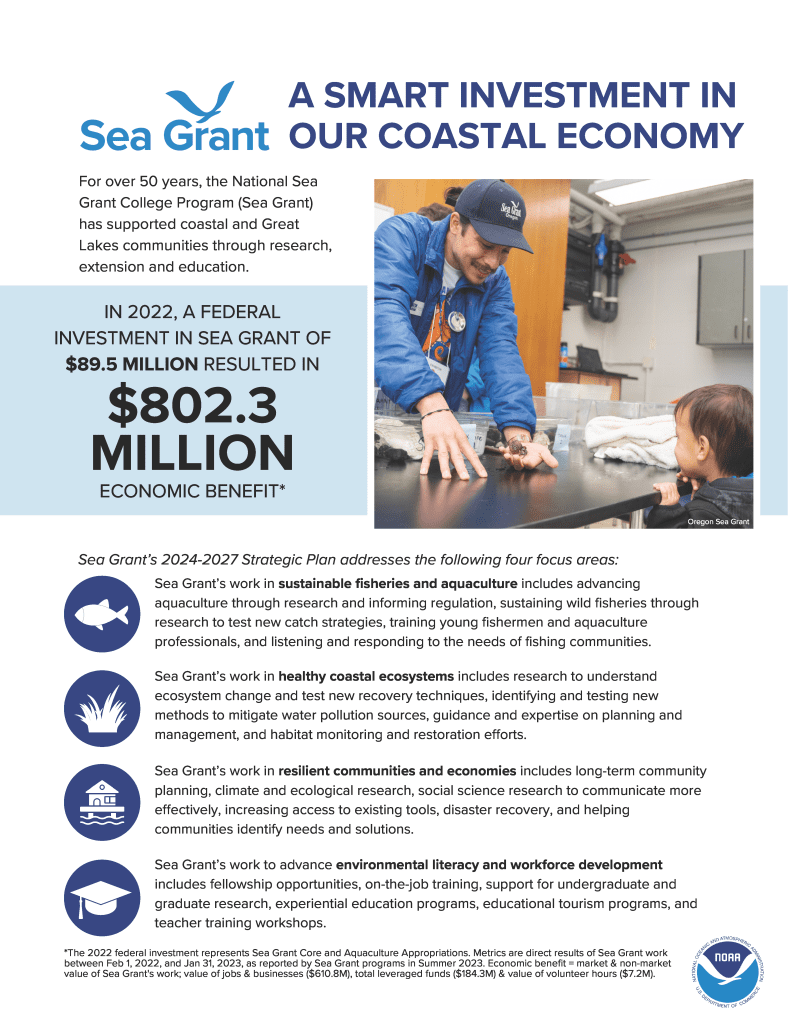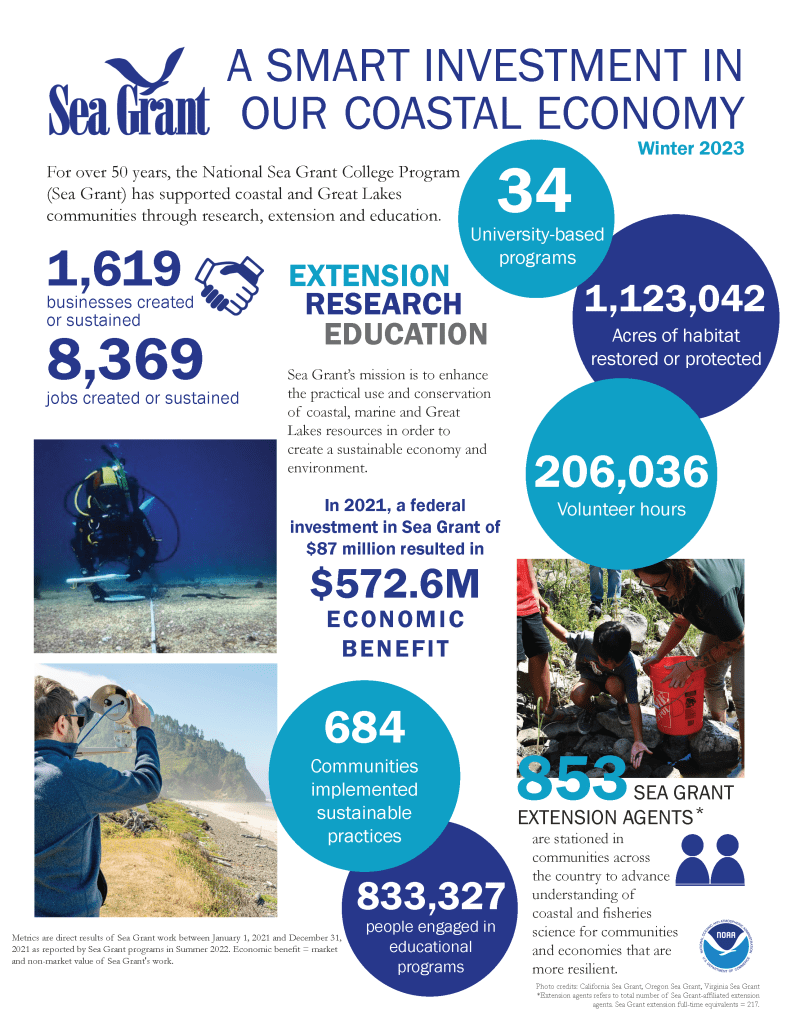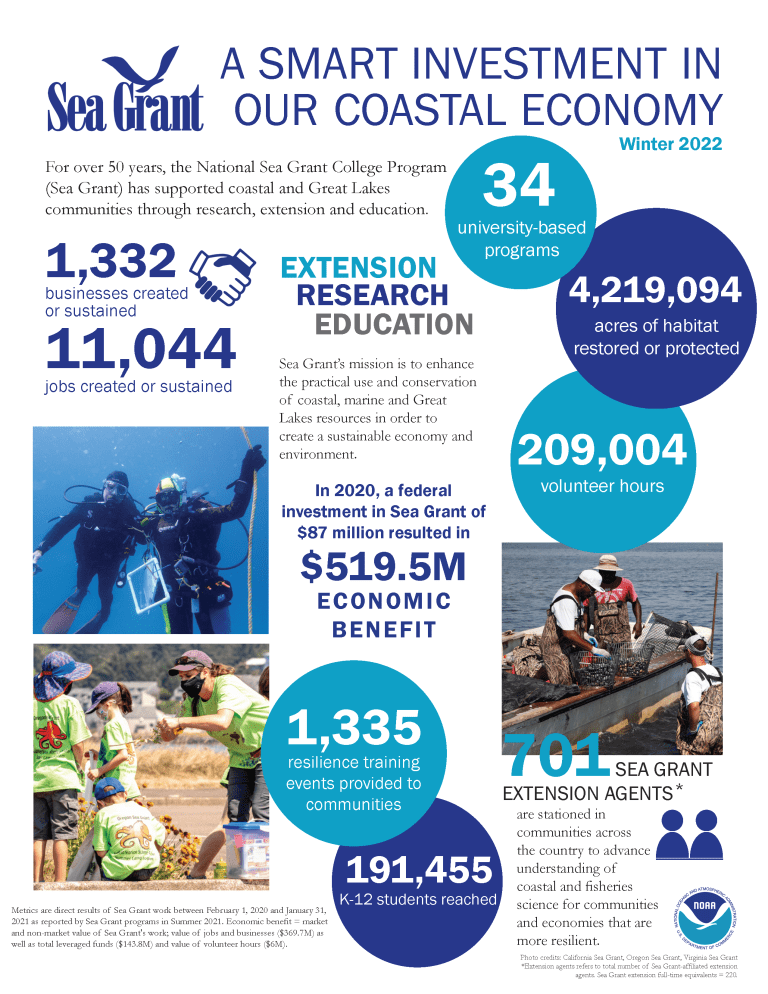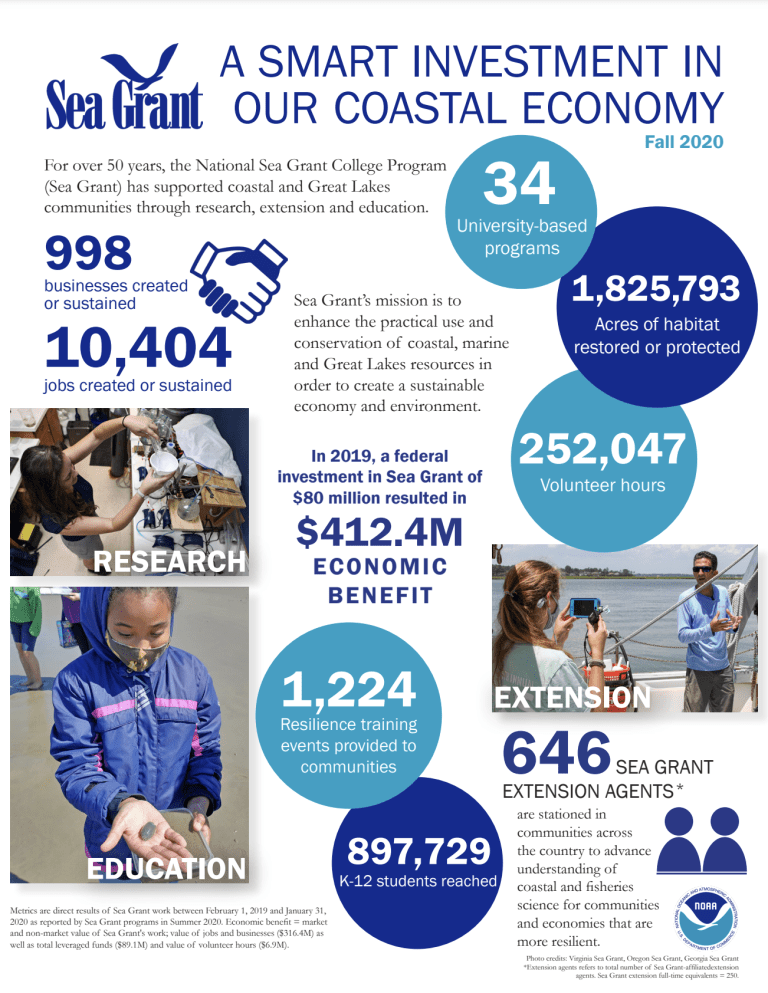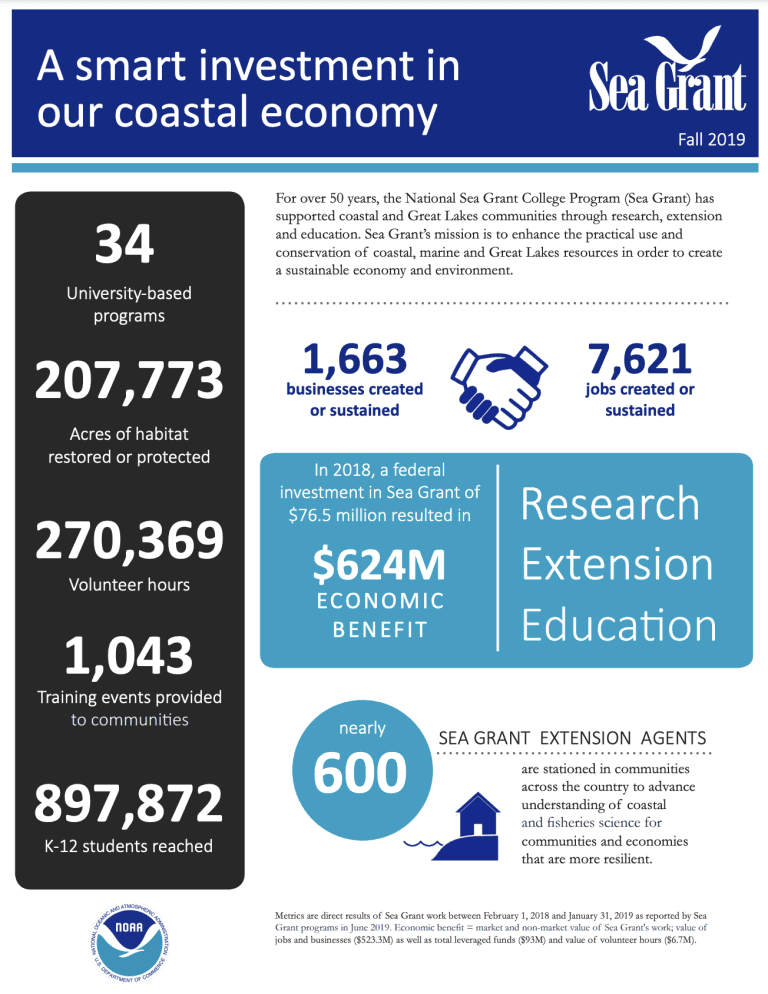Impacts
Search impacts of Sea Grant’s work, browse current projects, and explore any of the Sea Grant Colleges.
Sea Grant utilizes its network of professionals throughout the U.S. coastal and Great Lakes states as well as in Puerto Rico and Guam to accomplish its mission of enhancing the practical use and conservation of coastal, marine and Great Lakes resources in order to create a sustainable economy and environment. Sea Grant accomplishes its mission through research, extension and education. Sea Grant’s current strategic focus areas include healthy coastal ecosystems, sustainable fisheries and aquaculture, resilient coastal economies, and environmental literacy and workforce management.
In 2022, a federal investment in Sea Grant
of $89.5 million resulted in
Search Sea Grant Databases
The following two search features allow users to search Sea Grant’s database. Impacts are societal benefits and broader outcomes of Sea Grant’s work. Accomplishments included major projects and tasks completed by Sea Grant. Projects include scopes of work and descriptions of past and current work.
Tip: These search features work best if used one at a time. For example, users can search the Impacts and Accomplishments database for a particular region, date range, or category. Before searching projects, users should clear the previous Impacts and Accomplishments search results.
- The Sea Grant Impacts & Accomplishments Search is currently undergoing construction. Please check back soon for updates to the search.
